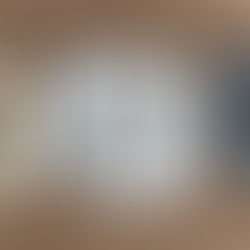How to 3D Print Letterpress Printing Blocks

We have recently been working with Gordon Chesterman, a local Letterpress Printer who trained at the London College of Printing, in the art of creating exquisite prints and posters using traditional equipment and printing methods, dating back to the 15th century.
From its invention in the 15th century through to the 20th century, letterpress printing was the normal form of printing text, however since the introduction of modern printing methods, its existence has declined. However, the unique qualities of letterpress printing is making a come-back, being appreciated by those who value quality and a traditional feel.
With printing blocks dating back many years, existing blocks become damaged, or additional letters are required and new printing blocks become hard to source.
As a result, Gordon approached Print My Part with the task of recreating printing blocks using the 3D printing process. This has proved extremely effective and surprisingly cost effective.
Below, we have outlined the complete process of creating a printing block using the 3D printing process.
1. Creating the 2D digital file
There is no doubt that the appeal of letterpress printing is in the completely unique, handcrafted aspect of the prints, with every block traditionally being cut from wood by hand. As a result, no two print fonts will be the same. Although using modern technology, it was critical that this individuality was maintained.
The first step was therefore to recreate the unique outline of the printing block. To do this, a print created using the original block was uploaded to a computer as a 2D image. To maintain the individuality, we then copied the outline of print with great care, ensuring every design quirk and unique identity of the original print was maintained.

Next, these 2D outlines were saved as vectors in the .DXF file format. This meant they could be uploaded directly into our 3D design software.
Alternatively, if seeking a completely new design, this same process can be carried out on any 2D sketch. Or better still, if provided in vector format, the file can be uploaded directly into our 3D design software. To highlight the effectiveness of the 3D printer, Gordon provided several fleurons to print alongside the hand made letters.
2. Making the 2D digital file 3D
Using our 3D design software, the .DXF outline could now be extruded into a 3D shape. A base was then designed around the letter, ensuring the plate was tangential to the outer edges of the letter.
Before adjusting the depth of the letter, the scale was modified to ensure the overall height was the required 2 inches.
To minimise cost, the 3D printed block would be mounted to an 18mm wooded block. To meet the magic depth of 0.918 inches, the depth of the base could therefore be adjusted to meet this height. The 3D print was completed using the FDM (Fused Deposition Modelling) printing process. This offers highly durable parts which could withstand the high forces of the printing press, whilst ensuring great details and accruacy.
3. 3D Printing the digital file.
It was now time to export the 3D files in the .STL format for 3D printing. Within a few hours our 4 test letters and various fleurons were complete. Check out the below video of the 3D printer in action!

4. Preparing the 3D prints for the Letterpress
Once printed, the 3D prints were stuck to an 18mm MDF sheet using Araldite™ to bring the depth of the block up to the magic 0.918 inches (23.32mm).
The face of the block was then gently sanded using wet and dry paper to provide a key for the ink whilst ensuring the exact block height was achieved.
Thats it, the letterpress printing blocks were now ready to go. Gordon used a range of 3D printed blocks and traditional blocks to highlight the effectiveness of the outcome, creating a truly faultless result.


If you need a letterpress block creating, please get in touch with Print My Part (info@printmypart.co.uk) and we will be happy to help. We are also happy to provide your printing block ready to go, ready-mounted to 18mm MDF and keyed.
If you would like a design letterpress printed by an expert in the craft, please get in touch with Gordon (chestermen@icloud.com) and he will be happy to work with you to create your very own exquisite poster. Click here to check out some examples of Gordon's work.





















